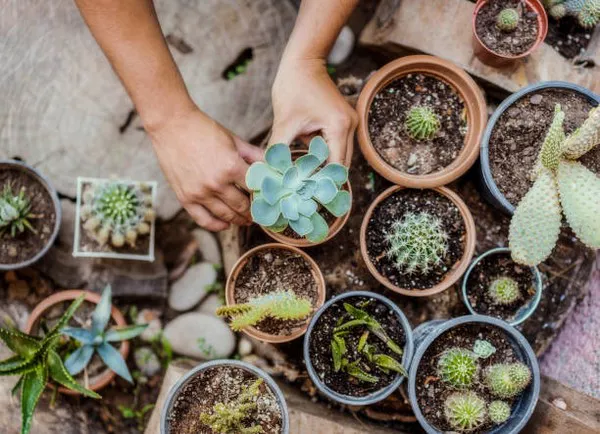Succulents have surged in popularity in recent years, captivating gardeners and plant enthusiasts alike with their unique shapes, vibrant colors, and low-maintenance care requirements. As more individuals seek to grow their own succulents from seeds, questions arise about the optimal number of seeds to sow per pot. While it may seem like a simple matter, determining the ideal seeding density involves considering various factors, including species characteristics, pot size, and growth environment. In this article, we delve into the intricacies of succulent seeding to provide a precise answer to the question: how many succulent seeds per pot?
Understanding Succulent Seed Characteristics
Before delving into seeding density, it’s crucial to understand the nature of succulent seeds. Succulent seeds vary widely in size, shape, and germination requirements depending on the species. Some succulent seeds are tiny, resembling specks of dust, while others are larger and more conspicuous. Additionally, certain succulents have specialized germination needs, such as light or temperature requirements, which influence their successful propagation.
When determining the number of seeds to sow per pot, it’s essential to consider the specific characteristics of the succulent species in question. Researching the germination habits and growth patterns of the chosen succulent is paramount for successful cultivation. Some species may have higher germination rates with fewer seeds per pot, while others may benefit from a denser seeding approach.
Factors Influencing Seeding Density
Several factors influence the optimal seeding density for succulents, including pot size, growth environment, and intended use. Let’s explore these factors in detail:
1. Pot Size: The size of the pot plays a significant role in determining seeding density. Larger pots provide more space for succulent growth, allowing for a greater number of seeds to be sown. However, overcrowding can lead to competition for resources, such as water and nutrients, potentially stunting the growth of individual plants. Smaller pots may require a lower seeding density to prevent overcrowding and promote healthy growth.
2. Growth Environment: The environmental conditions in which succulents are grown can impact seeding density. Factors such as light intensity, temperature, humidity, and airflow influence seed germination and subsequent plant growth. Succulent species adapted to arid climates may thrive in denser planting arrangements, whereas species accustomed to more temperate conditions may require more space to prevent moisture-related issues like rot.
3. Intended Use: The intended use of the succulent plants also informs seeding density decisions. If the goal is to produce a dense arrangement of succulents for ornamental purposes, a higher seeding density may be desirable to achieve a lush, full appearance. Conversely, if the aim is to grow individual specimens for transplanting or propagation, a lower seeding density may be preferred to allow each plant ample space to develop.
Determining Optimal Seeding Density
While there is no one-size-fits-all answer to the question of how many succulent seeds to sow per pot, there are general guidelines that can help inform seeding density decisions. Consider the following recommendations when determining the optimal seeding density for your succulent pots:
1. Research Species Requirements: Start by researching the specific germination and growth requirements of the succulent species you intend to cultivate. Understanding the natural habitat and behavior of the plant will guide your seeding density decisions.
2. Consider Pot Size: Match the seeding density to the size of the pot. Larger pots can accommodate more seeds, but be mindful of overcrowding. For smaller pots, err on the side of caution and sow fewer seeds to prevent competition for resources.
3. Experiment with Different Densities: Conduct small-scale experiments to test different seeding densities and observe how the plants respond. Monitor factors such as seedling emergence, growth rate, and overall plant health to determine the optimal density for your specific growing conditions.
4. Adapt to Environmental Factors: Adjust seeding density based on environmental factors such as light, temperature, and humidity. Succulents grown in more favorable conditions may tolerate higher seeding densities, while those in challenging environments may require more space to thrive.
5. Regular Maintenance: Regardless of seeding density, regular maintenance is essential for successful succulent cultivation. Monitor soil moisture levels, provide adequate light and ventilation, and remove any overcrowded or unhealthy seedlings to promote optimal growth.
Conclusion
Determining the optimal seeding density for succulent pots requires careful consideration of various factors, including species characteristics, pot size, and growth environment. While there is no universal answer to how many succulent seeds to sow per pot, following guidelines based on research, experimentation, and environmental adaptation can lead to successful cultivation. By understanding the needs of your chosen succulent species and adapting seeding density accordingly, you can enjoy healthy, thriving plants that showcase the beauty and resilience of these beloved botanical treasures.


